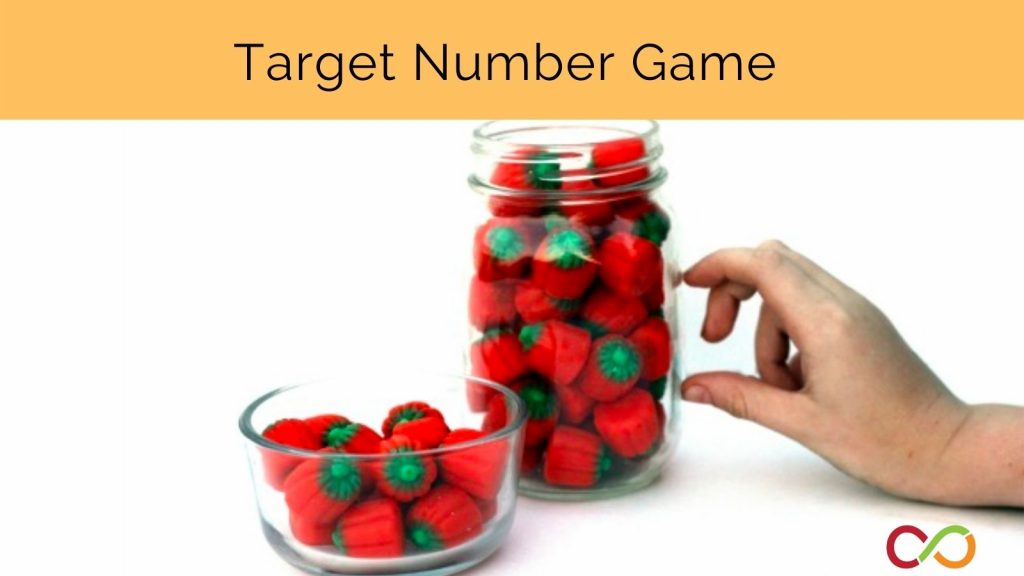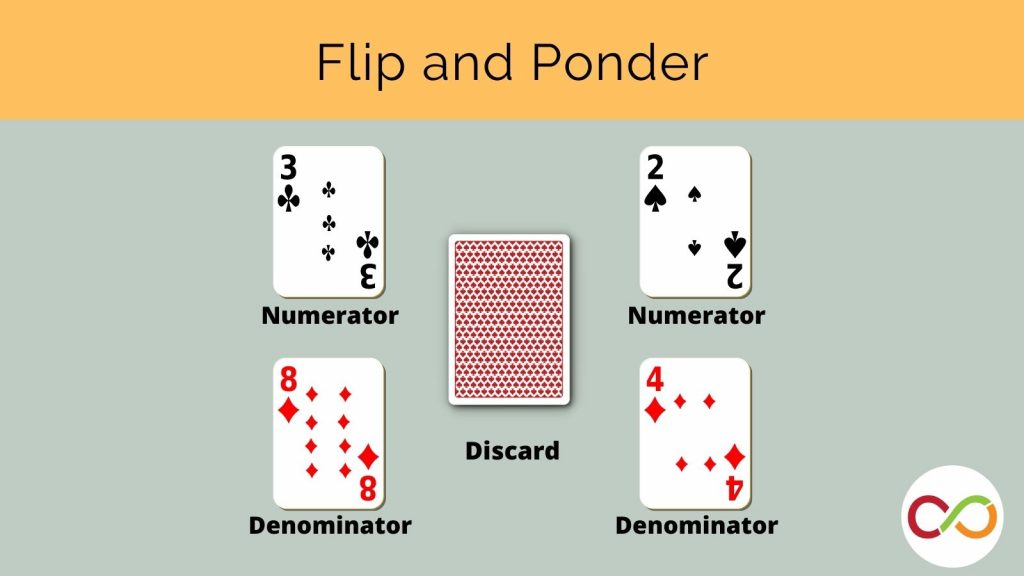Whole in One
Primary/Junior (Age 5 – 12)
Curriculum Goal
Primary: Number Sense
- Represent, solve, and compare the results of fair-share problems that involve sharing up to 20 items among 2, 3, 4, 5, 6, 8, and 10 shares, including problems that result in whole numbers, mixed numbers, and fractional amount.
Junior: Number Sense
- Represent fractions from halves to tenths using drawings, tools and standard fractional notation, and explain the meanings of denominator and numerator.
Context
- An in-class or online activity
- Students work in pairs.
- Students should have prior experience with the part-whole construct of fractions, notation of proper fractions.
Materials
In-person version
- One standard 52-card deck (jokers and face cards removed, ace is included as one)
- Use of benchmark area model or stacked number line (Appendix A)
Online version
- On Playingcards.io, with face cards removed
- Video conference capabilities
Lesson
- The goal is for students to combine two fractions to make a sum nearest to one. They must get as near to one without going over. Students cannot create improper fractions. The Ace card is to be included and represents the number one – it cannot be used as the denominator. One is the only whole number that students are aiming to make.
- One student will deal five face-up cards in the center.
- Player 1 chooses two cards to form a proper fraction, by assigning one to be the numerator and one to be the denominator.
- Player 2 does the same, choosing from the remaining three cards in the centre.
- The fifth card is discarded and added to the bottom of the pack.
- The dealer deals five new cards to the centre.
- Player 2 now has the first pick of the cards. They will create a new fraction that, when added to their previous fraction, has a sum as close to a whole number as possible without going over.
- Player 1 chooses from the remaining three cards.
- The winner of the round gets a point, the first player to five points overall wins.
- If the sum of any players fractions is greater than one, that player forfeits the round.
- There is no winner when both players’ fractions exceed one.
- Players discuss and explain how they estimated whose combined fractions were closest to a whole number (or one).
Look Fors
- Are students effectively estimating when determining a winner?
- Do students use fractional terminology by referring to a fraction as one number (i.e., “three fifths” as opposed to “three fives” or “three over five”)?
- Do students explain how they chose which of the two fractions are closest to one?
- Prompt students about their strategy. Ask them how they would play differently next time?
Extension
- Allow students to go beyond one or a whole so that the sum of two fractions in an improper or mixed fraction. The winner would still be the student who is closest to one.
- Use subtraction instead, who can get closest to zero?
Created by Claire Ogdon. Adapted by The Robertson Program.
Share this lesson
Share on facebook
Share on twitter
Share on email


